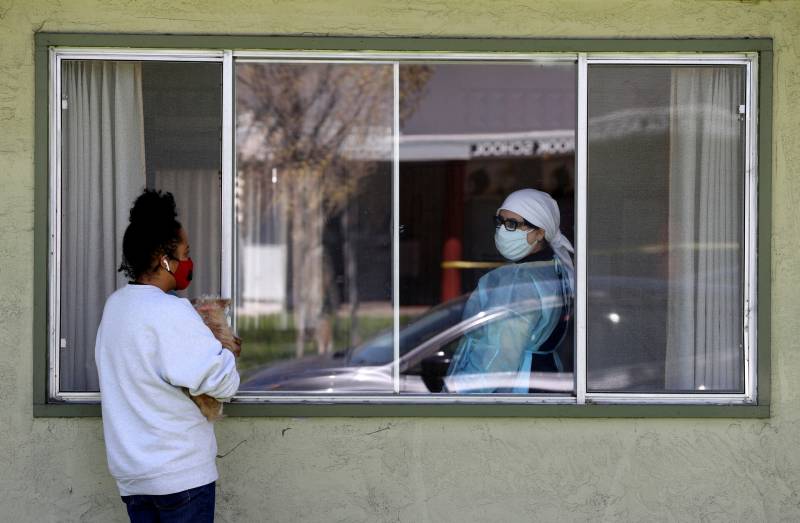It’s hard to compile accurate information, in part because the county health department in Santa Clara is the only one in the Bay Area that regularly is sharing data about long-term care outbreaks. Santa Clara had a peak of bad outbreaks in late April and early May; it’s declined since then.
Why Does the Virus Spread So Easily in Long-term Care Homes?
There’s more touching, there’s more interaction between nurses and patients at a skilled nursing facility because people are there for medical reasons and they’re more fragile.
People who are infected but have no symptoms can spread the coronavirus. And public health officials are concerned about transmission among the staff, especially where workers are taking public transit, or where they may be moving among two or three jobs at different facilities.
The concern with loosening the stay-at-home orders is that, with more people out in the world, these workers who are traveling on public transit will then be exposed to a higher level of risk.
Who’s In Charge of Assisted Living and Nursing Homes?
Both the California Department of Public Health and the Centers for Medicare and Medicaid Services oversee skilled nursing facilities. Assisted living facilities are not considered health care facilities; the Department of Social Services oversees those.
Since skilled nursing facilities are more like hospitals, they have more regulations to follow, and can be written up if they don’t comply. In assisted living facilities, there are very few consequences if staff don’t meet the guidelines. For both facilities, counties don’t play a role in overseeing them.
How Did Regulators Prepare for the Pandemic?
At the beginning of this crisis, there was a huge concern among regulators that there would be staff absences and that staff themselves would obviously get sick. So there have been some waivers aimed at making it easier for facilities to hire more staff; regulators waived some training requirements and loosened up some background checks.
Right now, nobody’s getting in trouble for things that usually would be deficiencies or violations of standards. The goal, regulators say, is to talk to the facilities that they are not physically visiting. Remember, right now regulators and inspectors are not generally going to these facilities, nor are the local advocates from the ombudsman’s office.
Why Isn’t Everyone in Long-Term Care Homes Tested, Regardless of Symptoms?
San Francisco mandates testing. That’s just getting off the ground. Alameda County is recommending testing for workers and patients, whether they have symptoms or not.
There are two reasons testing isn’t mandatory. One, widespread testing has not been possible for a long time. And two, as Erica Pan, Alameda County’s acting health officer, told me, you want to make sure the tests are useful if you’re going to put people through that. In other words, they want to know there’s a concrete action they can take in response to a positive test. For example, they could recommend workers stay home if they’re positive or you can put COVID-19 patients together and move them away from negative ones.
Last, who pays for the testing? Counties have paid for some of it. County health officers say they try to get care homes to pay for their own tests. Industry associations are advocating for more federal aid and more publicly funded tests.
Help KQED Science report on the pandemic!

